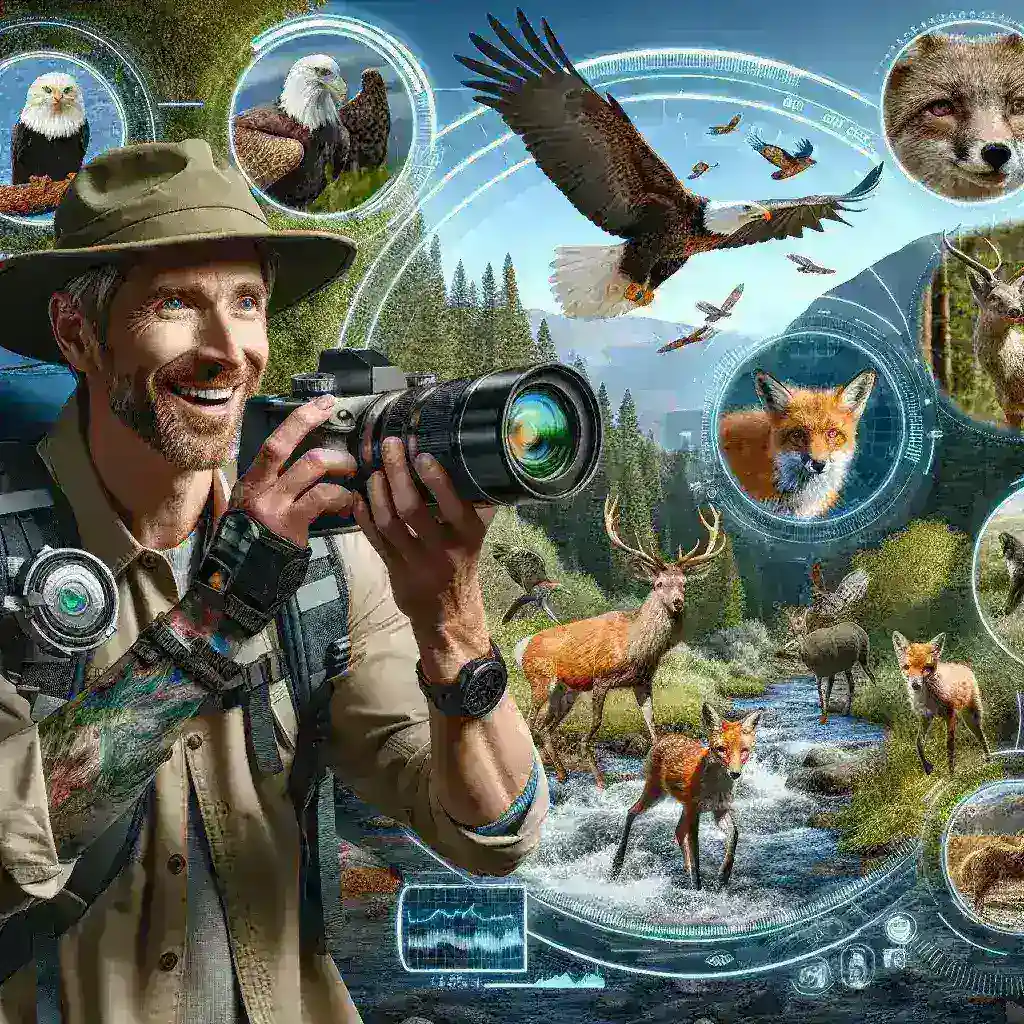The Evolution of Wildlife Photography
Wildlife photography has always been a nuanced art form, requiring not only technical skill but also a deep understanding of animal behavior and habitats. For decades, photographers have relied on patience and keen observation to capture stunning images of animals in their natural environments. However, with advancements in technology, the landscape of wildlife photography is shifting dramatically.
Introduction of AI in Photography
Artificial Intelligence (AI) is at the forefront of this transformation. By utilizing complex algorithms and machine learning, AI has the potential to enhance the way photographers work, particularly in the realm of wildlife photography. Adobe, a leader in creative software, has recently announced the addition of an AI-driven wildlife identification feature to its popular photo editing tool, Adobe Lightroom.
What is AI-Driven Wildlife Identification?
This innovative feature allows photographers to quickly and accurately identify different species of wildlife within their images. The AI uses image recognition technology to analyze the visual characteristics of the animals captured in photographs, providing users with information about the species, behaviors, and habitats.
How Does It Work?
- Image Analysis: The AI scans the uploaded images and compares them with a vast database of wildlife images to identify the species.
- Real-Time Suggestions: As users edit their photos, the AI may offer suggestions for identifying species based on the image’s context.
- Information Database: Photographers can access a repository of knowledge about various species, including their habitats, behavioral patterns, and conservation status.
The Impact on U.S. Photographers
For U.S. photographers, this feature represents a significant leap forward. The diverse ecosystems across the United States host a wide variety of animal species, from majestic eagles soaring in the skies to elusive bobcats prowling through dense forests. AI-driven wildlife identification can streamline the process of cataloging these encounters, providing photographers with more time to focus on their creativity and storytelling.
Benefits of AI-Driven Wildlife Identification
- Efficiency: Photographers can save valuable time when editing and organizing their photos.
- Education: The feature serves as a learning tool, helping photographers deepen their understanding of wildlife.
- Enhanced Creativity: With less time spent on identification, photographers can dedicate more effort to composition and storytelling.
Historical Context of Wildlife Photography
The art of wildlife photography has deep roots, dating back to the early days of photography in the 19th century. Photographers like Frank Chapman and George Shiras III pioneered techniques in wildlife photography, often spending days in the field to capture their subjects. The evolution of technology has drastically changed this landscape. In the 21st century, digital cameras, drones, and now AI tools have revolutionized the way photographers capture and process images.
Future Predictions
The integration of AI in wildlife photography is only expected to grow. As machine learning algorithms become more advanced, we can anticipate more refined identification capabilities, improved context awareness, and even the possibility of real-time identification during photo shoots. Photographers may be able to receive instant feedback on the species they are capturing, allowing for more spontaneous and engaging photography sessions.
Challenges and Considerations
While the benefits of AI-driven wildlife identification are numerous, there are also challenges to consider. One major concern is the accuracy of AI identification. Wildlife is complex, and many species share similar physical characteristics, making precise identification difficult. Furthermore, reliance on technology could reduce the emphasis on traditional field skills, which are essential for a wildlife photographer.
Pros and Cons
- Pros:
- Saves time in the identification process.
- Enhances educational opportunities for photographers.
- Improves workflow efficiency.
- Cons:
- Potential inaccuracies in species identification.
- Over-reliance on technology may diminish field skills.
- Privacy concerns regarding the use of AI in wildlife photography.
Real Examples of Use
Many photographers have already begun testing this feature in Adobe Lightroom. For instance, a wildlife photographer in Yellowstone National Park reported that the AI identification tool helped him identify a rare species of bird that he had been struggling to recognize. The information provided not only enriched his understanding of the species but also aided him in crafting a compelling narrative for his audience.
Cultural Relevance
The importance of wildlife photography extends beyond aesthetics; it plays a crucial role in conservation efforts. By accurately identifying and documenting various species, photographers contribute to the larger conversation about environmental preservation and biodiversity. Adobe Lightroom’s AI-driven wildlife identification feature empowers photographers to participate more actively in these conversations, providing them with the tools needed to highlight the beauty and importance of wildlife.
Conclusion
The integration of AI-driven wildlife identification in Adobe Lightroom marks a significant advancement for photographers across the U.S. By streamlining the identification process, this feature not only enhances the efficiency of wildlife photography but also fosters a greater understanding of our natural world. As technology continues to evolve, it is clear that the future of wildlife photography will be markedly different, blending creativity with groundbreaking innovations.
As photographers embrace these changes, they will undoubtedly uncover new ways to tell compelling stories about wildlife, encouraging others to appreciate and protect the incredible biodiversity that surrounds us.

Leave a Reply